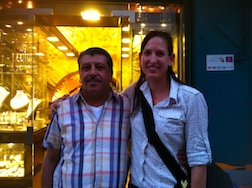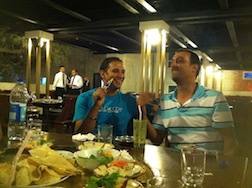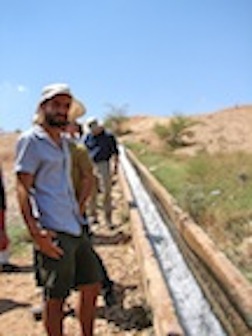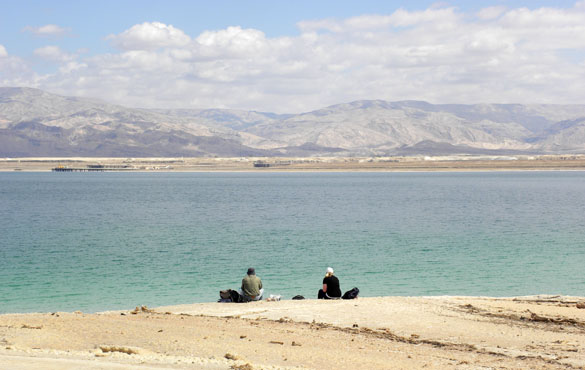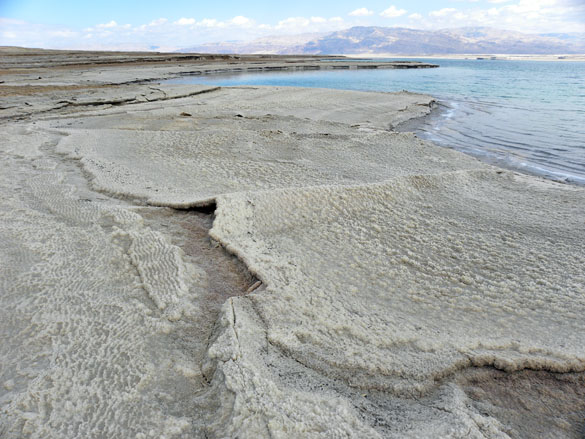Always before this, when I have come to this region of the world, I have come to Israel. I have landed at Ben-Gurion Airport and – aside from my first visit in 1969 in a group of American Jewish high school students – I have walked out the door and gotten into a sherut (shared taxi) to Jerusalem. I’ve known where to go and how to get there, and if I didn’t know, I knew how to ask, because I speak Hebrew. It always felt familiar and comfortable, always a homecoming. As a Jew I have always been sure of a welcome in Israel.
I landed in Amman as a total stranger, not knowing the language or the culture, and forewarned that if I revealed my identity as a Jew, I would most likely be greeted with suspicion, hostility, and anger. There is hardly any indication in Jordan that the country has a neighbor to its west with whom it is at peace. There are no Israeli goods for sale in the shops, there are no Israelis on the streets here, there is little or no mention of Israel or Jews in contexts where one would most logically find it. (The in-flight magazine of Royal Jordanian Airlines, for example, had an article on what to see and do in Warsaw, without a single reference to the Warsaw ghetto.). I found Jordan fascinating, and would love to come back someday, but I also found myself wondering, in every interaction, what the other person’s reaction would be if I revealed my identity.
I was looking forward to entering Israel by land rather than by air. The Allenby Bridge crossing is surreal, as Jordan, Israel, and the PA all cooperate in a charade of legal and diplomatic technicalities to allow people to cross from one state to another without defining which state they are crossing in or out of when they enter or leave the west bank of the Jordan River. I was curious to see what sort of reaction I would get from the Israeli officials, since my passport has the Israeli visa from March and I speak Hebrew, but I got no particular reaction. They were all clearly focused on screening the overwhelmingly Palestinian crowd, and any non-Arab with a US passport was just someone to pass along quickly (unless their footwear set off the metal detectors!). It was a colder reception than I have ever gotten, and I could see that the entire process was very intimidating and tension-filled for Palestinians.
Since tourists may come to Bethlehem and Jerusalem from either Israel or Jordan, one’s choice of travel usually reflects one’s political sentiments. Those who come from Jordan are presumed to be pro-Palestinian. (In our case this was especially true since the CIEE program director had arranged for our time in Palestine and Israel to be handled by a tour group run by an Israeli Jewish anti-Zionist activist. Our guide was also an Israeli Jewish anti-Zionist. He clearly thought at first that he was preaching to the choir, so on our first day we got more of a political harangue than a tour. Two of the group spoke to him about this and he did change his style to be more of the trained tour guide, and offered more critical reflection. He also graciously altered the schedule as much as possible to accommodate our requests.) Given the identity of our tour company, the people we interacted with felt free to say things like, “Better you should spend your money here, and don’t spend any of it in Israel.” The casual everyday negative references to Israel in both Jordan and Palestine sounded exactly like the casual everyday negative references to Arabs that I hear so often among American Jews. Both are very disturbing and reflect the distance between the two populations.
Staying in an East Jerusalem hotel continued my “through the looking glass” experience. Had I not made a point of taking the group to dinner in my favorite restaurant in West Jerusalem (and going on foot through its downtown), our tour would have arranged for us to spend all our time in the Palestinian half of the city, aside from our visit to Yad Vashem (the Israeli Holocaust museum and memorial). But it underscored the fact that on all my previous visits, my excursions into East Jerusalem had been few and far between. That one can visit the city and easily spend time only on one side or the other is a measure of the extent to which a “unified Jerusalem” is a fiction. The unity is political, stemming from Israel’s unrecognized annexation of the city in 1967; it is certainly not a unity of populations.
This experience left me wishing that there was a way to make all tourists see Israel and Palestine from both sides, rather than only coming to see the sights that reinforce their own views.


